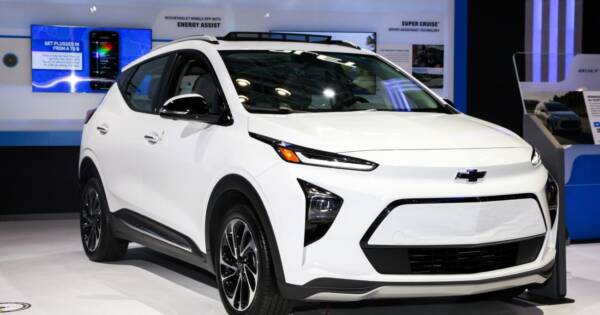2017 is the year of high-tech cars. So many innovations are appearing in the latest models, from trucks and vans to convertibles to sedans–and even more will happen in 2018. Some automakers are even promising to introduce self-driving cars in fewer than 5 years. This means that today, car companies are offering more semi-autonomous features than ever before.
Here are the latest trends in car technology, what to expect next in upcoming models, and the current high-tech leaders on the road.
 Automotive Trends of 2017
Automotive Trends of 2017
Technology is now one of the most important features to consider when buying a new vehicle. Many models released in 2017 can steer themselves down the road, stay in lanes (without your guidance), find a parking spot, or even park themselves. Avoiding an accident is now almost effortless thanks to helpful features like these.
While most of today’s modern technology is aimed at improving safety, automakers are also using high-tech advancements to improve driving pleasure. Increasing numbers of cars offer smart features that connect with your smartphone, too, like Android Auto and Apple CarPlay, integrating both navigation and entertainment. Rear cameras are now near-universal. The days of buying accessories to link your smartphone are gone as well, with nearly every model on the market including at least one USB port in-car.
The interior of cars is changing along with the internal high-tech features. Until recently, this was a relatively stable and unchanging component of car design. However, what’s inside is also rapidly changing to offer improved driving experiences. New technologies such as 3D laminated glass, haptic sensors, and augmented reality heads-up displays, all of which offer drivers alerts and warnings on invisible screens in the windshield, are slowly but steadily become a part of the modern driving experience.
All of these ambitious enhancements of safety or entertainment are changing the way we drive and perceive cars in general. The autonomous car will inspire even more changes, and soon. The front seat could be reoriented to face the back seat, so passengers can converse while the car cruises to a destination. Or, all seats could face a windshield that’s become a big HD movie screen. All in all, vehicle electronics could account for up to 20% of a car’s value in the next two years, compared to only about 13% in 2015.
1. Tesla Model S P100D (from $145,800)
The Model S P100D set a new record in speed: 0-60 mph in 2.28 seconds! But what started as a tour de force of electric performance has also become a showcase for semi-autonomous driving. This year, Tesla has completely changed the hardware and software for its Autopilot feature to enhance safety for drivers and passengers. Their Nvidia-based machine learning system that has 8 video cameras, 12 short-range ultrasonic sensors, and a forward-facing radar, introduces a completely new way to operate a car. The software also limits the semi-auto driving mode to a maximum speed of 45 mph and will slow down the car if you don’t put your hands back on the wheel after a few seconds. Tesla promises to update their system soon and increase the semiauto driving speeds later this year, inching us ever closer to self-driving cars.
2. Volvo S90 (from $46,950)
Surprisingly, the new Volvo S90 features more standard safety technology than any other vehicle currently on the road. Those unique features include pedestrian, cyclist and large-animal detection; lane assist and auto braking up to 80 mph; self-adjusting headlights that illuminate curves; parking assist; a 9-inch touchscreen connected car system; road-edge detection; and more. You won’t have to worry about your safety with this model’s many alert and assistance systems.
3. 2018 BMW 5 Series (from $51,200)
While this car’s design didn’t really change from the previous year’s, most of what’s new in the BMW 5 Series is inside. From its gesture-recognition touch-screen system with Apple CarPlay support to predictive on-street parking information (and even garage-space booking supported by ParkNow), this car is full of surprises. Another cool feature: you can park perpendicularly while standing outside the car by using the key fob or Alexa support to make remote commands from home. There’s also a 360-degree camera view that you can access from your smartphone. Semi-autonomous features, such as lane assist and auto stop and start in traffic also bring huge benefits.
4. Sierra 1500 Denali (from $51,190)
Pickup trucks are all about comfort nowadays. Forget the rugged appearance and experience of driving a truck anymore; the Sierra Denali boasts high-tech features like a wireless charging pad, collision warnings, automatic high-beams, and a Bose sound system with an excellent noise cancellation to keep the cabin comfortable. While it might not offer some of the high-tech driving features of smaller cars, this pickup truck packs an impressive list of additions that make it one of the more advanced truck choices.
5. 2018 Ford Mustang (from $25,585)
The 2018 Ford Mustang brings technology to traditional American muscle cars. For the first time, the American automaker is putting a 12-inch customizable LCD instrument cluster in the car, all synced to a system that memorizes your preferences. There is also Alexa support (“Start the engine!”) and cool safety tech features such as a pedestrian detection system, lane-keeping assist, and distance alerts that make every aspect of driving easier. On top of that, the car has an optional engine audio enhancement that can deliver an impressive roar. With the Ford Mustang, you can combine everything you love about cars with the latest advancements in driving technology.


